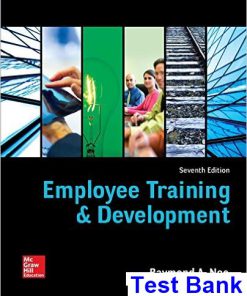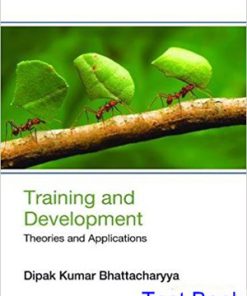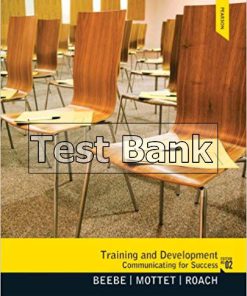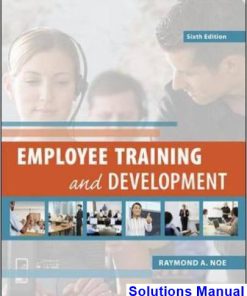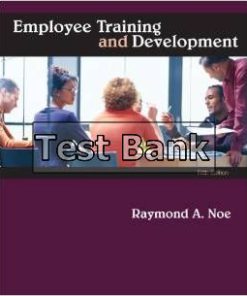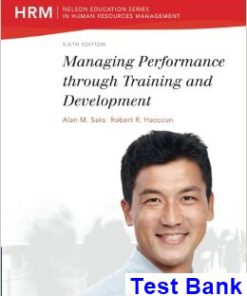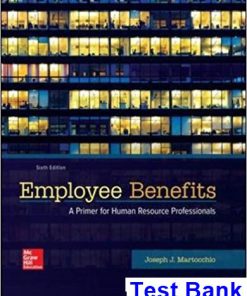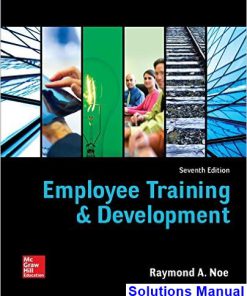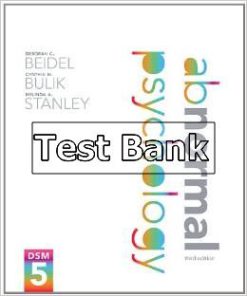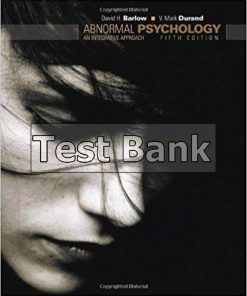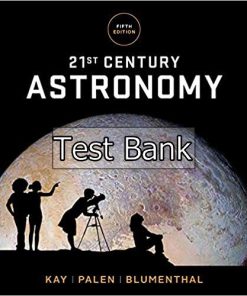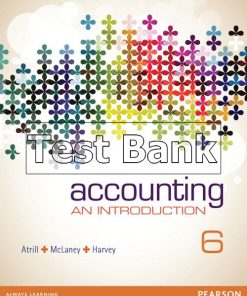Employee Training and Development 6th Edition Noe Test Bank
$50.00 Original price was: $50.00.$26.50Current price is: $26.50.
Employee Training and Development 6th Edition Noe Test Bank.
Employee Training and Development 6th Edition Noe Test Bank
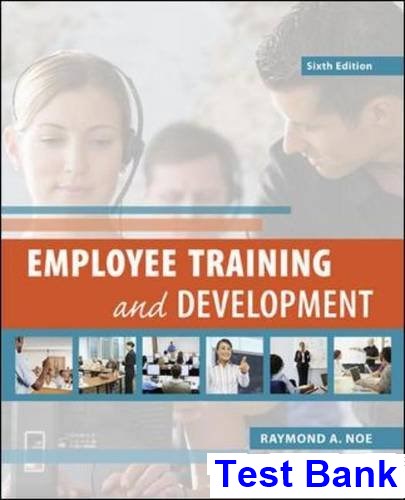
Product details:
- ISBN-10 : 007802921X
- ISBN-13 : 978-0078029219
- Author: RAYMOND A. NOE
Raymond Noe’s Employee Training and Development sets the standard in this course area. First introduced in 1998, ETD became the market-defining text within 6 months of publication. Its popularity is due to its lively writing style and relevant examples of the most up-to-date developments in training, research and practice, including the strategic role of training and the use of new technologies in training.
Employee Training and Development 6th edition strikes a balance between research and real company practices. It provides students with a solid background in the fundamentals of training and development such as needs assessment, transfer of training, learning environment design, methods, and evaluation.
Table contents:
Chapter 1 Introduction to Employee Training and Development 1 Forces Affecting the Workplace Make Training a Key Ingredient for Company Success 1 Introduction 2 What Is Training? 3 Designing Effective Training 5 The Forces Influencing Working and #Learning 8 Globalization 8 The Need for Leadership 10 Increased Value Placed on Knowledge 10 Attracting and Retaining Talent 11 Customer Service and Quality Emphasis 13 Changing Demographics and Diversity of the #Work Force 17 New Technology 19 High-Performance Models of Work Systems 21 Economic Changes 22 Snapshot of Training Practices 23 Training Facts and Figures 23 Training Investment Leaders 25 Roles and Positions of Training Professionals 27 Who Provides Training? 29 Who Is in Charge of Training? 29 Preparing to Work in Training 30 Organization of This Book 30 Key Terms 31 Discussion Questions 32 Application Assignments 32 Endnotes 33 Chapter 2 Strategic Training 37 Learning Is Business at Nokia 37 Introduction 39 The Evolution of Training?s Role 40 The Strategic Training and Development #Process 43 Identify the Company?s Business Strategy 44 Identify Strategic Training and Development Initiatives That Support the Strategy 45 Provide Training and Development Activities Linked to Strategic Training and Development Initiatives 47 Identify and Collect Metrics to Show #Training Success 50 Organizational Characteristics That #Influence Training 51 Roles of Employees and Managers 51 Top Management Support 52 Integration of Business Units 53 Global Presence 53 Business Conditions 54 Other Human Resource Management Practices 55 Extent of Unionization 56 Staff Involvement in Training and Development 56 Training Needs in Different Strategies 57 Models of Organizing the Training #Department 60 Faculty Model 60 Customer Model 61 Matrix Model 62 Corporate University Model (Corporate Training Universities) 63 Virtual Model (Virtual Training Organizations) 65 Marketing the Training Function 68 Summary 68 Key Terms 68 Discussion Questions 69 Application Assignments 69 Endnotes 70 Chapter 3 Needs Assessment 73 Determining Training Needs at Union #Pacific Railroad 73 Introduction 74 Why Is Needs Assessment Necessary? 75 Who Should Participate in Needs #Assessment? 76 Methods Used in Needs Assessment 78 The Needs Assessment Process 80 Organizational Analysis 81 Person Analysis 84 Task Analysis 92 Competency Models 95 Scope of Needs Assessment 98 Needs Assessment in Practice 98 Summary 99 Key Terms 100 Discussion Questions 100 Application Assignments 101 Endnotes 102 Chapter 4 Learning: Theories and Program #Design 105 A Positive Learning Environment #Energizes Training 105 Introduction 106 What Is Learning? What Is Learned? 107 Learning Theories 108 Reinforcement Theory 108 Social Learning Theory 109 Goal Theories 111 Need Theories 113 Expectancy Theory 113 Adult Learning Theory 114 Information Processing Theory 115 The Learning Process 116 Mental and Physical Processes 116 The Learning Cycle 118 Age Influences on Learning 118 Implications of the Learning Process for #Instruction 120 Instructional Emphasis for Learning #Outcomes 128 Considerations in Designing Effective Training Programs 129 Selecting and Preparing the Training Site 129 Selecting Trainers 131 How Trainers Can Make the Training Site and Instruction Conducive to Learning 132 Program Design 133 Summary 138 Key Terms 139 Discussion Questions 139 Application Assignments 140 Endnotes 141 Chapter 5 Transfer of Training 145 Training Makes the Grade at KLA-Tencor 145 Introduction 146 Training Design 148 Applications of Transfer of Training Theory 148 Self-Management Strategies 151 Work Environment Characteristics That Influence Transfer of Training 154 Climate for Transfer 154 Manager Support 156 Peer Support 159 Opportunity to Use Learned Capabilities 159 Technological Support 159 Organizational Environments That Encourage Transfer 160 The Learning Organization 160 Knowledge and Knowledge Management 161 Summary 165 Key Terms 165 Discussion Questions 165 Application Assignments 166 Endnotes 167 Chapter 6 Training Evaluation 169 Training Is Flying High at Northwest #Airlines 169 Introduction 170 Reasons for Evaluating Training 171 Overview of the Evaluation Process 172 Outcomes Used in the Evaluation of Training Programs 173 Cognitive Outcomes 174 Skill-Based Outcomes 174 Affective Outcomes 176 Results 177 Return on Investment 178 Determining Whether Outcomes Are Good 178 Relevance 178 Reliability 179 Discrimination 179 Practicality 180 Evaluation Practices 180 Evaluation Designs 182 Threats to Validity: Alternative Explanations for Evaluation Results 182 Types of Evaluation Designs 184 Considerations in Choosing an Evaluation Design 189 Determining Return on Investment 190 Determining Costs 191 Determining Benefits 191 Example of a Cost-Benefit Analysis 192 Other Methods for Cost-Benefit Analysis 194 Practical Considerations in Determining Return on Investment 194 Summary 195 Key Terms 196 Discussion Questions 196 Application Assignments 197 Endnotes 198
People also search:
employee training and development 6th ed
employee training and development 6th ed ebook
employee training and development examples
what is employee training and development
employee training and development job description
Instant download after Payment is complete
You may also like…
Humanities and Social Sciences
Managing Performance through Training and Development 6th Edition Saks Solutions Manual
Humanities and Social Sciences
Managing Performance through Training and Development 6th Edition Saks Test Bank




